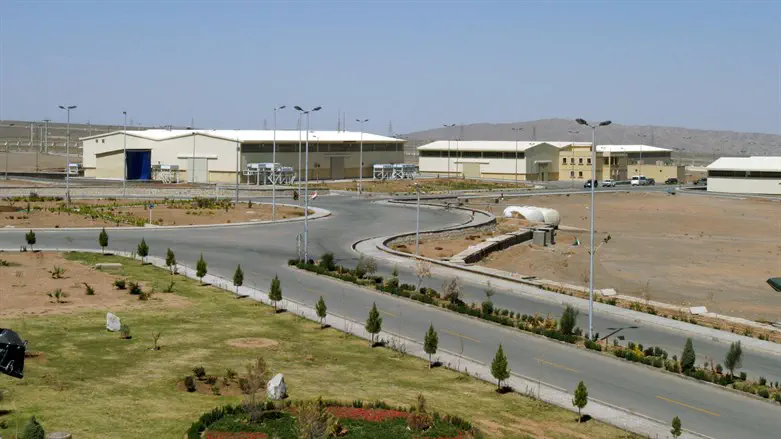
Iran has started up new cascades of advanced centrifuges and plans to install others in the coming weeks after facing criticism over its nuclear program, the International Atomic Energy Agency (IAEA) said Friday, according to The Associated Press reported.
Spinning up new centrifuges further advances Iran's nuclear program, which already enriches uranium at near-weapons-grade levels and boasts a stockpile enough for several nuclear bombs if it chose to pursue them. However, the acknowledgement from the IAEA did not include any suggestion Iran planned to go to higher enrichment levels amid wider tensions between Tehran and the West as the Israel-Hamas war rages in the Gaza Strip.
The IAEA said its inspectors verified on Monday that Iran had begun feeding uranium into three cascades of advanced IR-4 and IR-6 centrifuges at its Natanz enrichment facility.
So far, Iran has been enriching uranium in those cascades up to 2% purity. Iran already enriches uranium up to 60%, a short, technical step away from weapons-grade levels of 90%.
Iran also plans to install 18 cascades of IR-2m centrifuges at Natanz and eight cascades of IR-6 centrifuges at its Fordo nuclear site. Each of these classes of centrifuges enrich uranium faster than Iran's baseline IR-1 centrifuges, which remain the workhorse of the country's atomic program.
The report comes a day after the IAEA said that Iran has rapidly installed extra uranium-enriching centrifuges at its Fordow site.
Responding to the report, the US State Department said that Washington and its allies were prepared to continue to increase pressure on Iran if Tehran does not cooperate with the IAEA.
Ali Shamkhani, a former top security official within Iran's theocracy who still advises Supreme Leader Ayatollah Ali Khamenei, wrote on the social platform X that Tehran remains committed to nuclear safeguards though it “won't bow to pressure.”
“The US and some Western countries would dismantle Iran's nuclear industry if they could,” Shamkhani wrote, according to AP.
The latest IAEA reports follow a resolution passed by the IAEA Board of Governors censuring Iran over its lack of cooperation with the IAEA. Diplomats said Iran’s latest activity was as limited retaliation to the resolution.
The IAEA has long sought answers from Iran on uranium traces which were found at undeclared sites. While the number of sites under investigation has been narrowed to two from three, Iran still has yet to give the IAEA satisfactory answers on how the traces got there.
The IAEA released a report at the end of May which found that Iran has further increased its stockpile of uranium enriched to near weapons-grade levels.
Previously, the IAEA found that, between June and November last year, Iran slowed down the enrichment to 3 kg per month, but that jumped back up to a rate of 9 kg at the end of the year.
The increase came soon after Tehran barred a third of the IAEA's core inspections team, including the most experienced, from taking part in agreed monitoring of the enrichment process.
That move was part of Iran’s scaling back of its compliance with the 2015 nuclear deal it signed with world powers, in response to then-US President Donald Trump’s withdrawal from the deal in 2018.
(Israel National News' North American desk is keeping you updated until the start of Shabbat in New York. The time posted automatically on all Israel National News articles, however, is Israeli time.)
